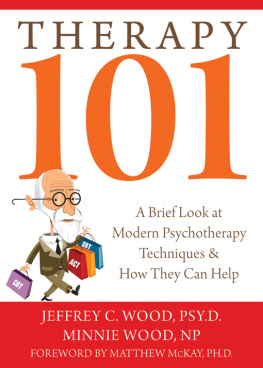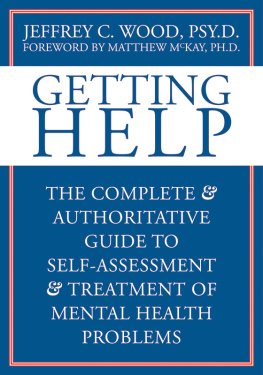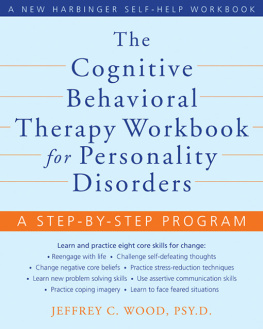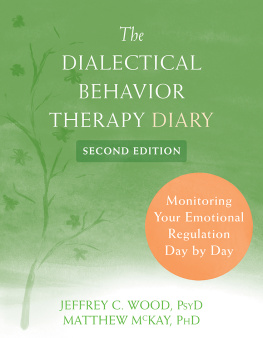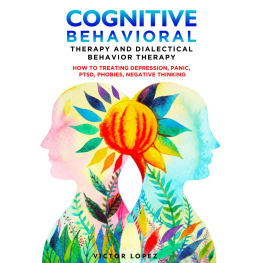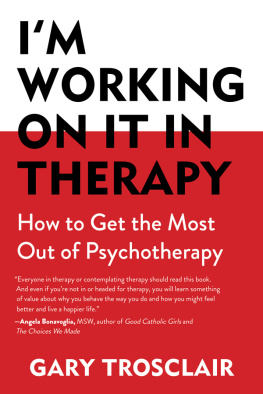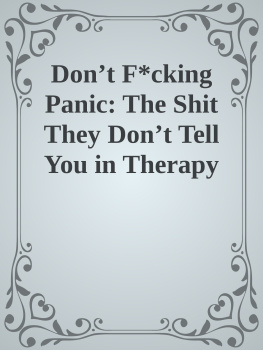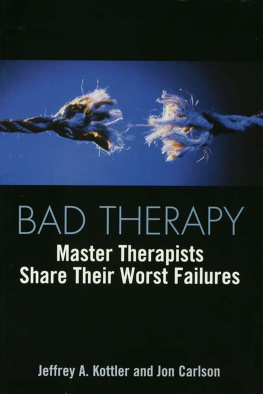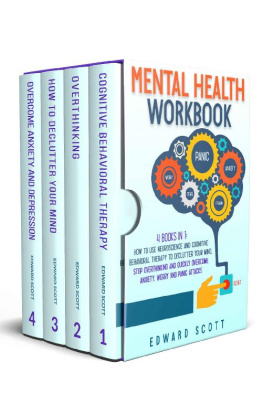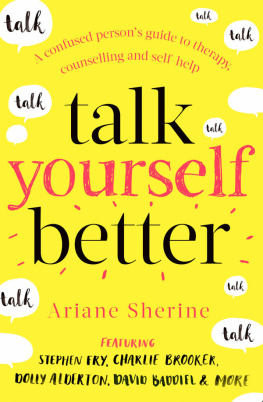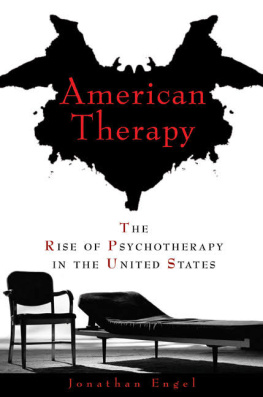Jeffrey C. Wood, Psy.D., is a psychologist in the San Francisco Bay Area. He specializes in cognitive behavioral treatments for depression, anxiety, trauma, and chronic pain, as well as biofeedback and life-skills coaching. Dr. Wood is author of Getting Help and coauthor of The Dialectical Behavior Therapy Skills Workbook. Please visit www.drjeffreycwood.com for more information.
Minnie Wood, NP, is an adult nurse practitioner. She is a primary care provider at a community health center in San Francisco where she also provides case management services to patients with chronic pain, substance abuse, and mental health issues.
Chapter 1
Treatments Supported by Research
The effectiveness of the following treatments hasbeen supported by studies comparing them to the use of other treatments and, often, the use of medications. All of these treatments will require you to collaborate with your therapist and to play an active role during your sessions. Some of these treatments are conducted in brief formats of eight to fifteen sessions, and many are conducted in a consistent, step-by-step manner.
Not all of the treatments in this book have been standardized or subjected to the same amount of research as the treatments discussed in this chapter. Not all treatments, like psychoanalysis, are capable of being standardized, so studying them is often difficult. Some competing clinicians would argue that conducting therapy in a consistent, standardized way is cold or impersonal. However, this is more often the fault of the therapist than the therapy.
In this chapter youll be introduced to behavior therapy, the treatment made famous by applying successes with laboratory animals to the lives of human beings. Brief psychodynamic therapy is a shorter, more standardized form of Freuds psychoanalysis. Cognitive behavioral therapy combines the successes of early behavior therapy with the newer insights of how thoughts affect actions. Interpersonal therapy examines the way your relationships affect the way you feel. And rational emotive behavior therapy, a treatment similar to cognitive therapy, will help you to untangle yourself from self-imposed rules and distorted ways of thinking.
Behavior Therapy
Behavior therapy focuses on the way dysfunctional behaviors lead to mental health problems. One of the main beliefs of this treatment is that your actions and reactions are largely learned. Some behaviors are actively reinforced and rewarded with things like food and money, while other behaviors are learned by watching and imitating other people. Unlike a cognitive behavioral therapist, a therapist working from a strictly behavioral model is not interested in the way your thoughts affect your actions and emotions. However, today, a more flexible behavior therapist will often be indistinguishable from a cognitive behavioral therapist (which you can read about below).
Behavior therapy has gone through many changes. At the beginning of the twentieth century, early behavioral theory was largely influenced by the work of the famous Russian physiologist, and Nobel prize winner, Ivan Pavlov. Pavlov discovered that the dogs used in his research experiments salivated both when they saw their food and when they heard the ringing of a bell that announced the arrival of their food. In the dogs brain, the association of the food and the bell had become the same, and therefore, they both elicited the same physical response.
Later, in the 1950s, the American psychologist B. F. Skinner brought behavioral theory to the forefront of psychology. Skinner used similar types of reinforcement such as food and punishment to shape the behavior of animals, and later humans. Both of these researchers greatly influenced the learning theories of what later became behavior therapy.

Behavior therapy focuses on actions that can be observed. Factors that cannot be observed, such as unconscious thoughts, are unimportant to this treatment. The focus of behavior therapy is on the here and now and what can be done to help you solve your problems. Behavior therapists arent concerned with helping you figure out what may have caused your problems. In some ways, behavior therapy is like an urgent medical treatment. Your primary care provider isnt concerned with how you broke your leg; rather, he or she will focus on what can be done to fix it.
Like the other therapies in this chapter, behavior therapy is based on research that has determined the most effective procedures to treat a particular mental health problem. As a result, the treatment for each problem will be slightly different. For example, the treatment for depression will be different than the treatment for phobias. All of the treatments are structured and time-limited, but they are also very interactive. In session, you and the behavior therapist will work as collaborators, identifying the nature of your problem, what triggers it, and how long it lasts. Then the two of you will come up with a treatment plan, to which youll be asked to commit.
The methods used in behavior therapy will depend on the nature of your problem, but often they include relaxation exercises, training in assertive communication skills, problem-solving skills, and role playing to learn new social skills. Youll also be asked to record your behaviors during the week outside of session, in order to observe your progress.
Again, depending on your problem, your therapist also might ask you to engage in activities that often seem challenging, such as using exposure and response prevention. This method, which is used to treat obsessive-compulsive disorder, requires you to make a list of your feared situations. Then, in a safe, systematic way, youll be asked to expose yourself to the feared events, either in real life or in your imagination, beginning with the least fearful situation and working your way up to the most frightening. The goal of this treatment is to help you successfully confront your fears in a safe, progressive way and to help you realize that nothing bad or dangerous will happen to you.
Behavior therapy is effective for treating:
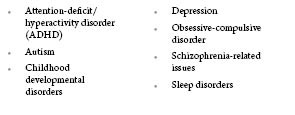
For more information, visit the websites of:
- The Association for Behavioral and Cognitive Therapies: www.abct.org
- The National Association of Cognitive-Behavioral Therapists: www.nacbt.org

Brief Psychodynamic Therapy
Brief psychodynamic therapy is a form of treatment largely based on psychoanalysis. However, as the name of this therapy suggests, the length of the treatment is much shorter than traditional psychoanalysis. Typically, the number of sessions will range from five to forty. The session limit will be discussed before treatment begins, and its likely that your psychotherapist will often remind you of the termination date.
The term brief psychodynamic therapy actually includes a number of different treatments, each with a slightly different focus. Some concentrate on making connections between your past childhood experiences and your current problems. Others closely examine your thoughts and feelings about your psychotherapist or discuss what it feels like to end treatment so soon. Most of these elements are also explored in traditional psychoanalysis. However, you can expect your brief psychodynamic therapist to be more interactive with you in session. He or she also will provide you with more feedback than youd normally get in traditional psychoanalysis.
Next page
